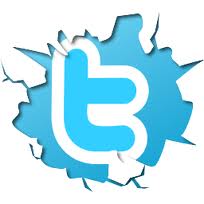A friend of mine has just begun to tweet. She was one of those people — which is very common — who created an account two years ago, and was feeling very hip and on top of the trends. And then she never used it.
We sat down last week to build some skills and help her get into meaty conversations in her field. She was a quick learner, excited and motivated. And a week later I got the one line email:
So, what am I actually suppose to be saying on Twitter?
Tweeter's Block is real. (The Urban Dictionary even has a definition, and to think it did cross my mind that I may have made up the term just now.) You'd think it would be easy to pound out 140 characters, but it's not so simple, especially if you're just getting started. Thus, some suggestions:
- Don't stress to much about it. Unlike many other media, Twitter is a constantly moving conveyor belt. While everything may be searchable ultimately, the vast majority of people are not going to scroll back weeks or months of years to see every tweet, or especially your first tweets. Unlike the opening sentences of a novel (which may or may not grab you), each individual tweet does not determine the rest of your tweeting trajectory or reputation.
- Get some clarity on what personal (or professional) brand and voice you want to be. This varies so much on Twitter, and you might be struggling with striking the right tone, as much as finding the right content. Farra Trompeter from Big Duck has taught me to think about yourself (or your organization) as a color, a car, a celebrity. What would it be? Red, Porsche, Tom Cruise? Or Lilac, Prius, Meryl Streep? This might get you in the mood to strike the right tone.
- Consider creating a content ratio for yourself as a guideline. At the gym you wouldn't only work your quads for weeks at a time — it would lead to an imbalance in strength. You discipline yourself to do hamstrings and abs and arms too. Similarly, a Twitter ratio can help you focus. If you'd been doing a ton of promotion about your own work, it will force you to be conversational, generous and to add value. For every 10 tweets, consider this as a guideline (may vary based on your style, work, and Twitter use, but this ratio is offered as a starting place to break your tweeter's block):
- 2 tweets adding value around your areas of interest, expertise, and field. E.g. a book recommendation, a link to an article you enjoyed, a resource.
- 2 tweets being generous, including responding to someone else's question for help or input.
- 2 conversational tweets, including participating in a hashtag (beyond just using it as a bulletin board). This can include adding your voice to a conversation, or asking your own question to either help you in your work, or to deepen the conversation taking place already.
- 1 tweet thanking or recognizing someone for a link they shared, their good work, replying to you, etc. Use their username if they tweet.
- 1 tweet for Follow Friday. Use the hashtag #FF and a username, then note why this person made an impact on your week
- 1 self-promotional tweet, such as a plug for your event or a link to your own blog post.
- 1 spontaneous or fun tweet! Leave some room to be a little bit playful and spontaneous that doesn't have to fit into any category. What's a highlight of your day? A interesting observation or ah-ha moment? A small act of kindness that made your day? A reflection "thinking about …" without a conclusion or specific answer. Authenticity builds trust and attention – so be real!
- In addition, retweet others a couple times. What content do you think your followers will find useful and you felt was high quality or particularly insightful? What people and/or orgs do you want to develop a relationship with? In one click, you can begin to curate content other's have tweeted.
As you glance through your recent tweets, it should feel friendly, generous, thoughtful. It should include a handful of usernames of other people (shows you're being conversational and social), a few hashtags (you're part of something bigger), and a few retweets. There shouldn't be big gaps in your use. Some people tweet many times a day, some only a few times per week. Either is OK, but big gaps show you're not engaged, nor listening to others.
Notice what other tweets you enjoy reading, replying to, and retweeting. What about their style and/or content is attractive to you? Use it as a reflective opportunity to get some insight about your own use.
What have you done to break tweeter's block? What types of content do you focus on creating, and what gets the most traction for you?

